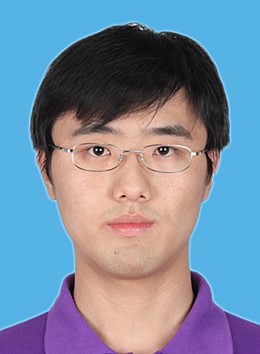报告题目:Giant piezomagnetism and noncollinear spin current from C-paired spin valley locking
报告人:刘军伟 教授 香港科技大学

时间:2022年7月20日 (星期三)下午2:30
报告方式:腾讯会议:583-837-605 会议密码:202207
邀请人:马衍东 教授
报告摘要
In this talk, I will take our recently proposed new type of spin-valley locking (SVL), named C-paired SVL, in antiferromagnetic systems. It directly connects the spin/valley space with the real space, and hence enables both static and dynamical controls of spin and valley to realize a multifunctional antiferromagnetic material. The new emergent quantum degree of freedom in the C-paired SVL is comprised of spin-polarized valleys related by a crystal symmetry instead of the time-reversal symmetry. Thus, both spin and valley can be accessed by simply breaking the corresponding crystal symmetry. Typically, one can use a strain field to induce a large net valley polarization/magnetization and use a charge current to generate a large noncollinear spin current. We predict the realization of the C-paired SVL in monolayer V2Se2O, which indeed exhibits giant piezomagnetism and can generate a large transverse spin current. Based on symmetry analysis and first-principles calculations, we also found C-paired SVL can exist in the following experimentally verified AFM materials, NaOsO3, LaMnO3, LaCrO3, TbFeO3, MnTe, RuO2, MnF2, FeF2, CoF2, and NiF2. Our findings provide new opportunities to integrate various controls of spin and valley with nonvolatile information storage in a single material, which is highly desirable for versatile fundamental research and device applications.
Reference: Nature Communications 12, 2846 (2021)
报告人简介
Prof. Junwei Liu obtained his PhD in the department of physics, Tsinghua University, in 2014, and then he started his postdoctoral research in Massachusetts Institute of Technology. He joined Hong Kong University of Science and Technology in 2017 as an assistant professor. His research interest includes: 1) Topological materials including quantum anomalous Hall insulators, topological insulators topological crystalline insulators and topological semi-metals; 2) Quantum Monte Carlo simulations of strongly correlated systems; 3) Atomic-layer-thin ferroelectric materials and physics; 4) Two-dimensional quantum materials and phenomena; 5) Applications of machine learning in physics. He has published more than 50 papers including 2 in Science, 1 in Nature, 1 in Nature Physics, 3 in Nature Materials, 6 in Nature Communications, 2 in Physical Review Letters, 1 in Optica, 2 in Nano letters, 1 in Physical Review Materials, 1 in Adv. Mater., 2 in Physical Review Applied and 21 in Physical Review B. He was awarded National Natural Science Foundation of China Excellent Young Scientist (Hong Kong and Macau) and currently is lead National Key R&D Program of China supported by Ministry of Science and Technology of the People's Republic of China.
